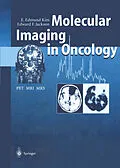Advanced imaging techniques often make it possible to diagnose localized abnormalities prior to irreversible damage. PET permits visualization of tumor metabolic or physiologic characteristics. MRI shows morphologic abnormalities and allows assessment of the functional status of tissue, including the ability to indirectly map areas of task-induced neuronal activation and to map blood volume and flow. MRS provides noninvasive biochemical information from tumors and surrounding normal tissue. By combining PET, MRI and MRS information we should be able to differentiate tumors from non-tumor lesions, characterize types or grades of tumors, monitor tumor regression, recurrence or response to therapy, and also image the location of gene delivery. This book reports updated techniques, instrumentation and clinical application of PET, MRI and MRS in cancer management.
Klappentext
This is a report on updated techniques, instrumentation and clinical application of PET, MRI and MRS in cancer management.
Inhalt
Principles and Technology: Principles of Cancer Biology, Biochemistry, Immunology and Pathology; Imaging Strategies and Perspectives for Cancer Diagnosis and Monitoring; MRI: Physical Principles to Advanced Application; MRS: Physical Principles and Applications; Principle and Instrumentation of PET; Radiopharmaceutical for Tumour Imaging and MRI Contrast Agents; Receptor Imaging; Practical MRI and PET Techniques and their Artifacts; Clinical Applications of MRI, MRS and PET: Lung Cancers; Breast Cancers; Gastrointestinal Cancers; Urologic Cancers; Gynecologic Cancers; Brain Tumors; Head and Neck Tumors; Musculoskeletal Tumors; Melanoma, Lymphoma, Myeloma.
